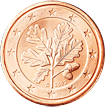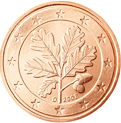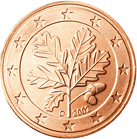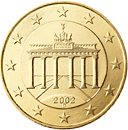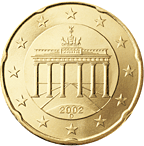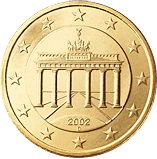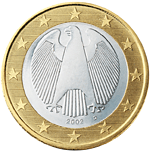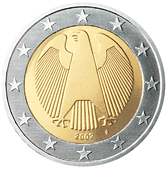
Germany Euro DesignGerman euro coins have three separate designs for the three series of coins. The 1, 2 and 5 cent coins were designed by Rolf Lederbogen, the design for the 10, 20 and 50 cent coins is by the hand of Reinhard Heinsdorff and the 1 and 2 euro coins were done by Heinz Hoyer and Sneschana Russewa-Hoyer. Featured in all designs are the 12 stars of the EU and the year of imprint. In addition to the year, the German coins also feature a small letter as a mint mark indicating the particular mint that minted the coin.
The letters were assigned to the mints as they opened. The mints in Hannover/Vienna (B), Frankfurt am Main (C), Dresden/Muldenhütte (E), and Darmstadt (H) have since been closed; the last, Muldenhütte, in 1953 German euro coinage - Obverse side
| ||||||||||||||||||||||||||
 |
    |
 |
|

